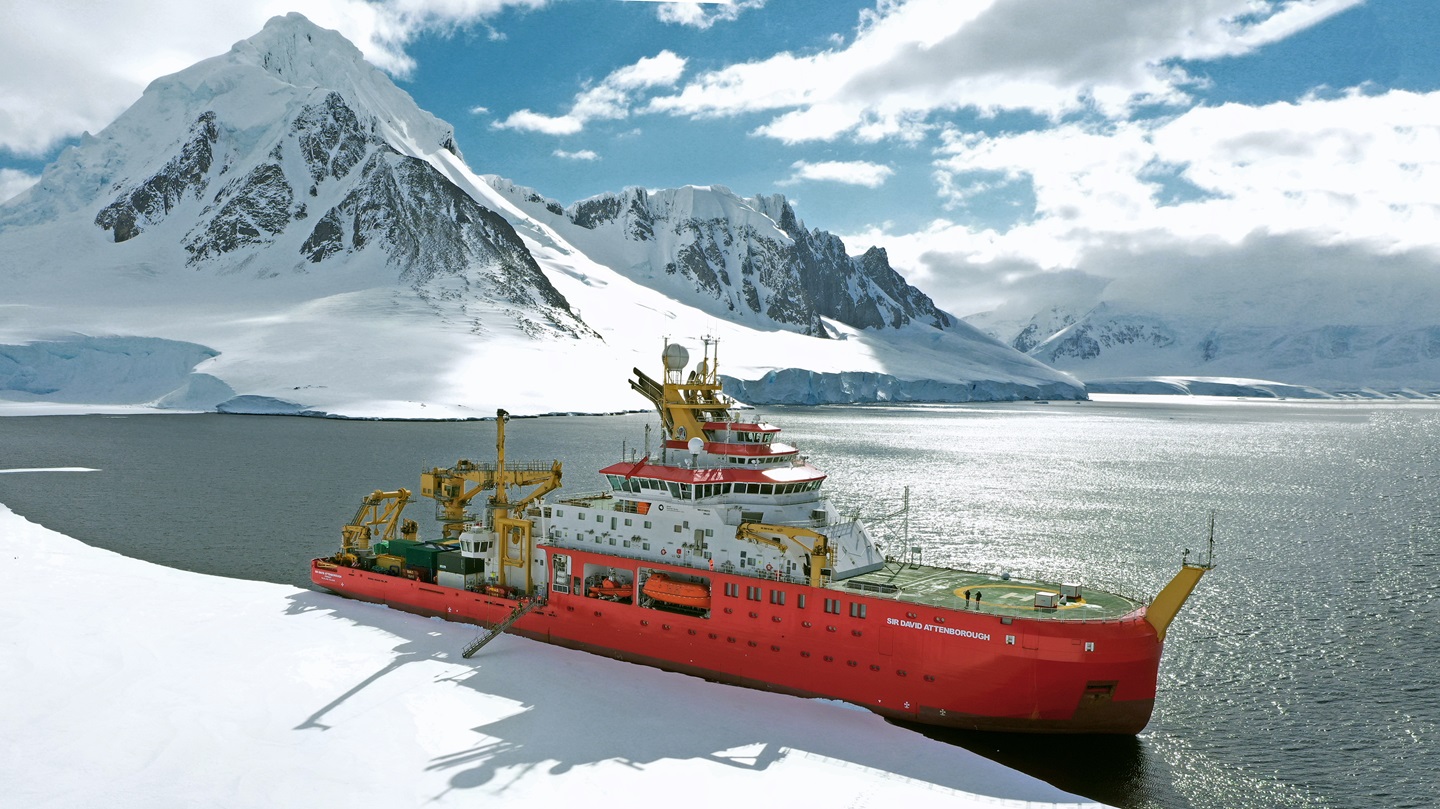Seals reveal age of Antarctic water for first time

RRS Sir David Attenborough research vessel, photo credit Jenna Plank, British Antarctic Survey.
01 July 2024
The age of water in the Antarctic is being revealed by seals for the first time.
Aberystwyth University researchers are beginning to receive satellite data from seals showing how much oxygen is contained in the region’s water - a way of measuring its age and where it comes from.
Part of an international effort to understand the effects of climate change in polar regions, this data is being used to see how water circulation is changing and its effects on glaciers.
How far and how fast the warm current flows under the Antarctic glaciers, thawing them underneath, will affect how quickly they retreat.
Their disappearance could lead to a catastrophic rise in sea level - leaving major coastal settlements across the world underwater.
Earlier this year, Dr Gui Bortolotto from Aberystwyth University located and tagged seals in the Antarctic on the RRS Sir David Attenborough research vessel, as part of Project PICCOLO.
He is now receiving daily satellite data tracking the seals’ movements across the North-eastern portion of the Weddell Sea and assessing changes in water circulation in the region.
If more water is being drawn in from outside the Antarctic, it could be a sign that the ocean will warm faster.
Dr Gui Bortolotto from Aberystwyth University said:
"We know that the ice in the Antarctic is melting and that the sea level is going to rise over time. Climate change is happening, but the way it changes is key to predicting the speed of the process.
"The data that comes back from the seals tells us how much oxygen it contains and its age. It also tells us the extent to which the water circulation is changing. The amount of water coming into the Antarctic from other oceans has a big impact on the speed at which the glaciers thaw - and that has big implications for us all."
Even with advanced equipment, it can be very difficult to measure deep water features in Antarctica - especially under the ice.
However, elephant and Weddell seals regularly swim through the very waters scientists wish to monitor – regularly diving to depths of over 1000 metres.
Dr Bortolotto added:
“Understanding the changes in these oceans, including the warming of specific regions, is a vital part of giving policy makers the tools to limit and mitigate the climate crisis. Seals are precious and beautiful creatures and it’s a privilege to work with them. They are like a special, crack research team - reaching places that even our most advanced technology cannot.
“I am particularly interested in investigating different things about the ecology and behaviour of those seals, such as dive characteristics and the places they prefer to go. Their swimming will hopefully help the world understand the serious impact climate change is having on our planet.”
The PICCOLO research project is funded the Natural Environment Research Council.



